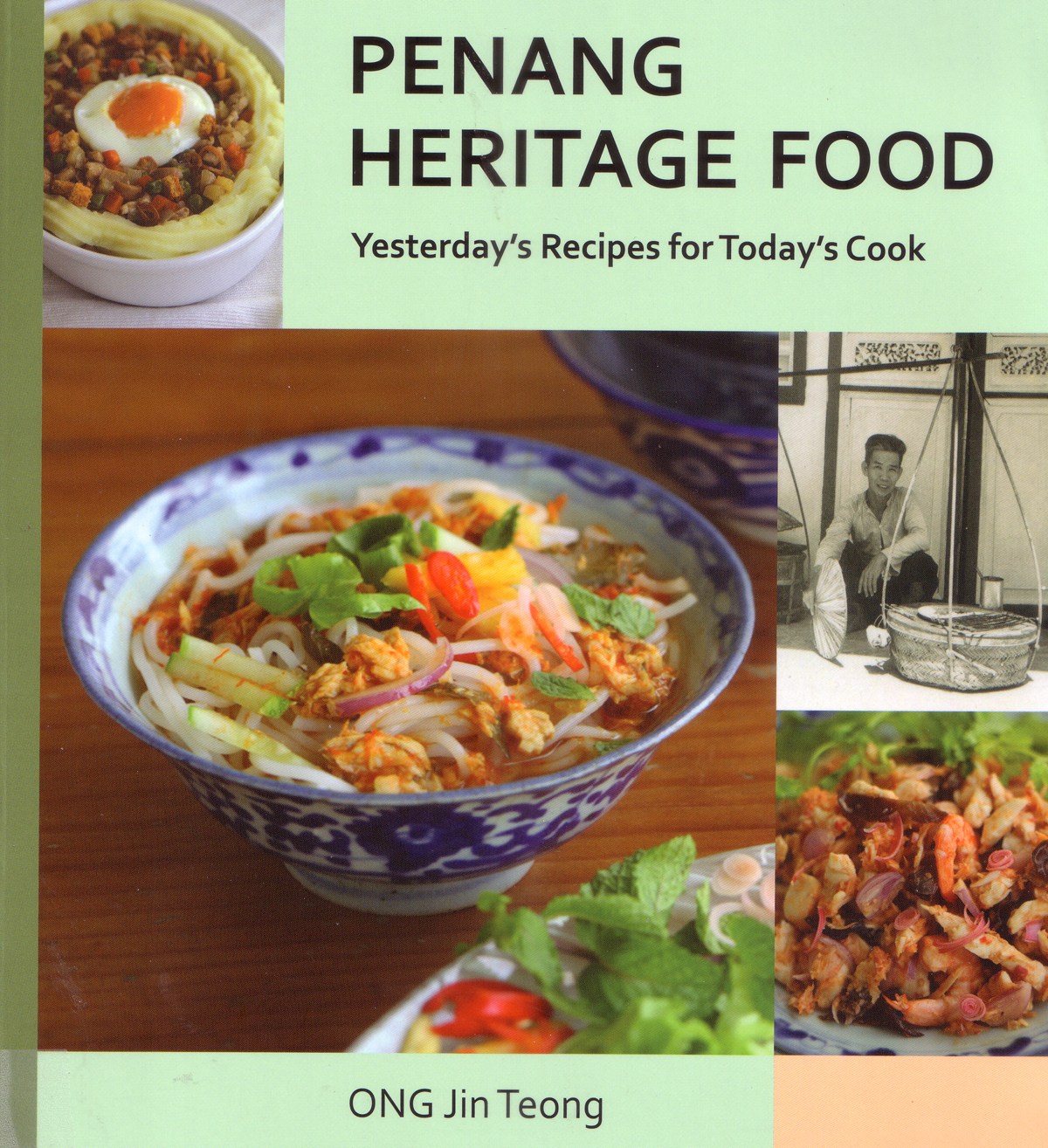
| What is Flavor and Fortune? |
| How do I subscribe? |
| How do I get past issues? |
| How do I advertise? |
| How do I contact the editor? |
Read 13026098 times
Connect me to:
| Home |
| Articles |
| Book reviews |
| Letters to the Editor |
| Newmans News and Notes |
| Recipes |
| Restaurant reviews |
| Article Index (all years, slow) |
| List of Article Years |
| Article Index (2025) |
| Article Index (last 2 years) |
| Things others say |
| Related Links |
| Log In... |
| Authors |
| Categories & Topics |
Penang Heritage Food
by: Ong Jin Teong
Singapore :
Landmark Books Ltd. 2010, Paperback
ISBN: 981-4189-24-3
Reviewed by: Jacqueline M. Newman
Spring Volume: 2012 Issue: 19(1) page(s): 21
 Subtitled: Yesterday's Recipes for Today's Cook, after the introduction, this volume deftly discusses Singapore cuisine and many recipes that are part of it. The influences are Penang, Malay, Hokkien, Hainanese, Indian, and Thai, and are divided into sections so-named. There is lots of historical background, cultural information, and visuals, along with more than sixty recipes of classic and long-forgotten dishes.
Subtitled: Yesterday's Recipes for Today's Cook, after the introduction, this volume deftly discusses Singapore cuisine and many recipes that are part of it. The influences are Penang, Malay, Hokkien, Hainanese, Indian, and Thai, and are divided into sections so-named. There is lots of historical background, cultural information, and visuals, along with more than sixty recipes of classic and long-forgotten dishes.
Detailed are ingredients important to Singaporean cuisine such as tar sar pneah-¨Calso known as bean paste biscuits, assam-¨Cwhich is tamarind, durian¨Cwhich is that thorny smelly fruit so loved; it originated in Malaysia, belacan-¨Cfound in those paper-wrapped squares--it is dried shrimp paste with more, etc..
We loved making and eating Penang Laksa¨Ctheir tasty noodle dish. It can be eaten alone but we did prefer it in a soup. Also loved were the many suggested garnishes for it. Many, but not all dishes have color photographs. All have introductory material that places them in the culture and the country. These prepare readers to understand and want to make them.
We thank the author and relatives for their in-depth education. We learned lots simply by reading this book. We now understand that Poh Piah are related to spring rolls but with a different fillings and that they can be even better when served with a local sauce, its recipe provided below.
Our taste buds thank them for the snack/appetizer foods. There is so much to learn in this volume, including local words as well as English ones in many places including the recipe ingredient lists. For us and all who use this book, when shopping we will do a better job of recognizing them and cooking with them.
| Poh Piah Spring Roll Sauce |
|---|
1/2 teaspoon assam (tamarind), seeds removed 2 teaspoons chili powder 1 Tablespoon vegetable oil 3 Tablespoons shallots, peeled and thinly sliced 3 Tablespoons raisons 3 Tablespoons dates, pitted 2 teaspoons chili powder 1/2 teaspoon salt 1 and 1/2 teaspoons sugar Preparation: 1. Break up the tamarind into smaller pieces and soak them in two tablespoons warm water and let it rest there until softened. Check for any remaining seeds by squeezing the pulp between the fingers. This does remove most of them; then strain the liquid. 2. Mix chili powder with two teaspoon of water preparing it as a paste. 3. Heat the oil and fry the shallot slices until brown, stirring so they do not burn and turn black. Then set them aside on a plate, and fry the chili paste until fragrant. 4. In a food processor, blend the chilies, fried shallots, dates, and raisons. Then transfer this to a saucepan and add half a cup of water, the tamarind liquid, salt, and sugar and bring to the boil, reduce the heat, and simmer for five minutes. Serve warm with any poh piah, spring roll, or dumpling-like food. |

Copyright © 1994-2025 by ISACC, all rights reserved
Address
3 Jefferson Ferry Drive
S. Setauket NY 11720